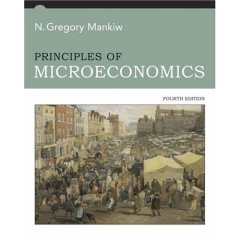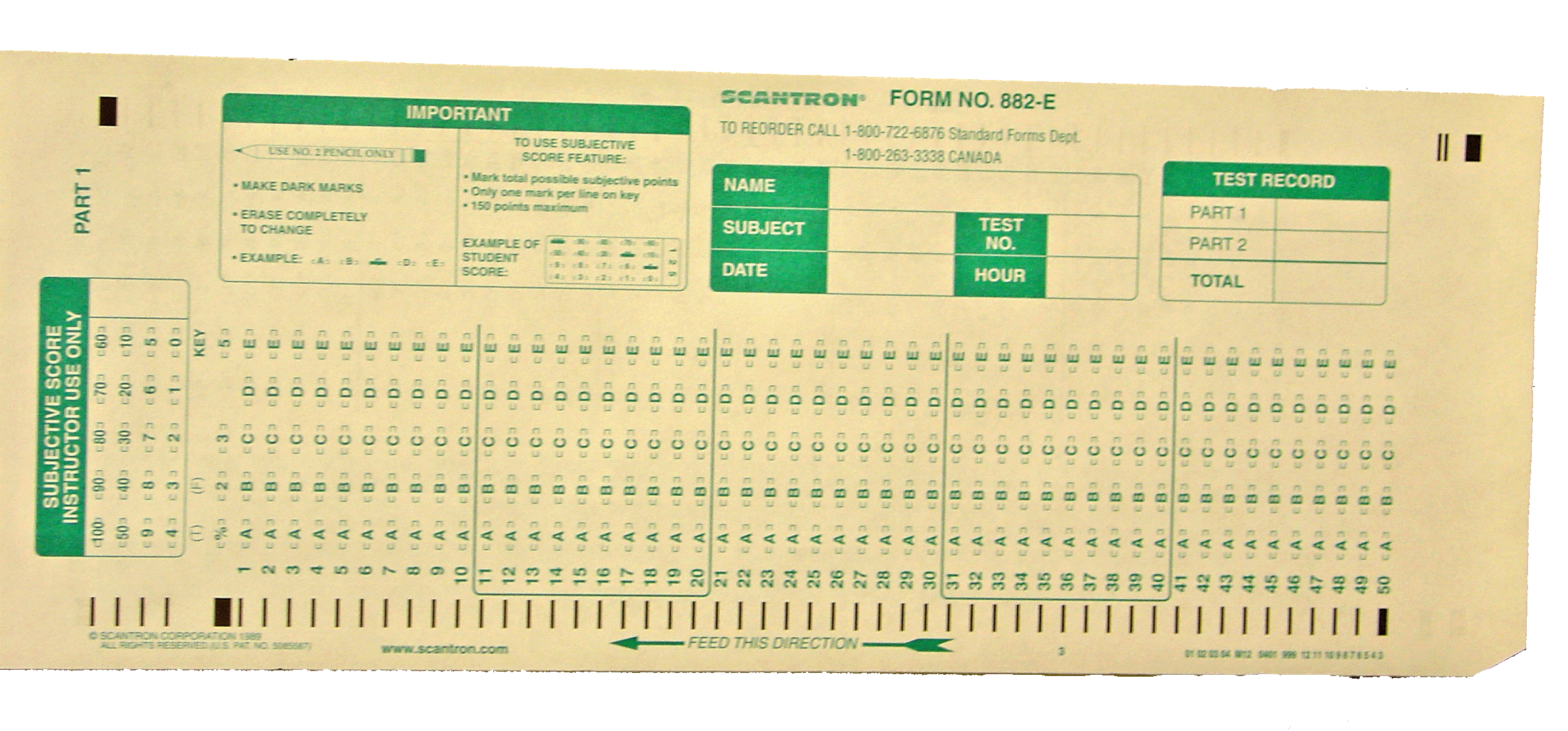
 |
|||||||||||
| Page Last Updated: November 28, 2007 7:17 AM | ||||
| Syllabus Links | ||||
Find the required texts |
||||
| Required Texts | ||||
Gregory Mankiw, Principles of Microeconomics, 3rd Edition ISBN 0-324-17188-9 |
||||
 |
||||
Subscription to the The Wall Street Journal (either the hard copy or the on line version is acceptable although the on-line version will be more difficult to use for our purposes.) 15 week subscription cost: $30.00 |
||||
 |
||||
| Highly Recommended Text | ||||
| The publisher has produced a study guide for the Mankiw textbook: Robert B. Harris, Study Guide for Mankiw's Principles of Economics. You can use the study guide on-line by using the fillowing link: Study Guide Link It is also available under Mr. Green's name at the reserve desk at the Browning Library at Dixie State College, and it can be purchased at the bookstore,. (If the bookstore is out of the Study Guide, find Mrs. West of the bookstore staff and get her to order you a copy.) | ||||
| General Education | ||||
Economics 2010 satisfies the Social Science category of Dixie State College's General Education Requirements. The college has not established any prerequisites for Microeconomics. However, to successfully complete the course requires good writing, reading, and math skills. Mr. Green, therefore, strongly recommends that you complete English 1010 Introduction to Writing and Math 1050 College Algebra thereby giving yourself every chance to complete the course successfully. |
||||
| Class Interruptions | ||||
| Please turn off your cell phones, radios, walkmans, and alarms such as watches and palm pilots during class. Electronic disturbances of this class will not be allowed. | ||||
| Dixie State College's Liberal Education Program Objectives | ||||
|
||||
| Dixie State College's Economics Program Objectives | ||||
|
||||
| Return to the top | ||||
| Student Responsibilities | ||||
| "An eminent mathematician once remarked that he was never satisfied with his knowledge of a mathematical theory until he could explain it to the next (person) he met in the street. This is hardly exaggerated; however, we must remember that a satisfactory explanation entails duties on both sides.” | ||||
| Gifts | ||||
| Gift from students to the teacher can be misinterpreted. While the thought will be appreciated, Mr. Green cannot accept gifts under any circumstances. I would be better for all concerned if they were not offered. | ||||
| Grading | ||||
| Grades will be calculated using the following formula: | ||||
| Exam Grade ........................
60% |
||||
| Homework Grade ................ 40% | ||||
| Extra Credit .......................... + | ||||
| Grade Creation | ||||
| All exam and worksheet grades will be determined using one of the following two methods. First, your score on your will be divided by the high score in the class. If your score is within 95% o f the high, you will receive an A. The breakdown will then descend by percentages of the high until the a score that is 60% of the high earns a D-. However, if the average grade for the class, calculated using the first method, is less than a C, a second method will replace the first. Instead of dividing by the high score, the denominator will be manipulated until the average grade for the class is set near C. Further adjustments will be made if there are several sections of the class and significantly differentiated denominators between the classes. If there are multiple sections of the class that use the same measuring instrument, as when all section take the same exam, the average will calculated from all sections rather than from just your class. | ||||
| Return to the top | ||||
Grading Percentages Breakdown |
|||||
Above 95% |
= A | ||||
| 90% to 94.9% | = A- | ||||
87% to 89.9% |
= B+ | ||||
| 83% to 86.9% | = B | ||||
| 80% to 82.9% | = B- |
||||
| 77% to 79.9% | = C+ |
||||
| 73% to 76.9% | = C |
||||
| 70% to 72.9% | = C- |
||||
| 67% to 69.9% | = D+ |
||||
| 63% to 66.9% | = D |
||||
| 60% to 62.9% | = D- |
||||
| Below 60% | = F |
||||
| Return to the top | |||||
| Exams | ||||
| Six Exams will be held during the semester. Each Exam, worth 41 points, will cover either two or three chapters. | ||||
| Exam Schedule | ||||
| Exam #1 covers Chapters 2, 3, 4, and 5. Exam #2 covers Chapters 6. 7, 8, and 9. Exam #3 covers Chapters 10, 11, and 13 Exam #4 covers Chapters 14, 15, 16, and 17 |
||||
| Source of Questions | ||||
| The purpose of these exams are to insure that you thoroughly read, study, and understand the material in your textbook. All questions on the exam are written by the publisher, not Mr. Green. Each exam is constructed by a computer program that chooses the questions are random with approximately the same number of questions from each chapter. Literally anything mentioned in the text could be the focus of a test question. You must read the book, maybe several times, to do well | ||||
| Exam Rules | ||||
Each Exam will have 49 multiple choice questions and one logistics question The first three exams will be conducted in the ASC testing center in the Browning building. The last exam will be conducted in the classroom during the final exam period. For the first three exams you will have several days including a weekend (where possible) to take the exam. You will be allowed to bring a SCANTRON sheet, a #2 pencil, a calculator, and a blank piece of scratch paper to the exam; in addition you will be permitted to use one 81/2 by 11 inch sheet of paper on which you may write any notes you may need to stimulate your memory. Please leave everything else home. You will have as much time as you need to finish the exam so long as you do it one sitting. |
||||
 |
||||
| Studying for the Exams | ||||
| Mr. Green strongly recommends that you use the Study Guide for Mankiw's Microeconomics that has been prepared by the publisher to compliment your textbook. Most students using this source score better on their tests. The bookstore will have hard copies or will get them, there is a copy at the library on reserve under Mr. Green’s name, the URL to the publishers website is included above, and a link to the on line version is included on the Syllabus page of the Microeconomics website | ||||
| Early or Late Exams | ||||
| Because each exam is available at the examining center over several days, it should not be necessary to ever ask to make one up. Class policy, therefore, discourages make-up exams.. Sometimes students miss exams for reasons beyond their control such as scheduled school sponsored activities or real emergencies. In these cases, a one make up exam per semester will be allowed. If arrangements are made before the exam is scheduled, and if there is a valid – college activity related reason – no penalty will be assessed. If no arrangements are made, a 10 point reduction of the exam score will be imposed. Under no condition whatever will more than one make up exam per semester be allowed. |
||||
| Return to the top | ||||
| Homework | ||||
The homework category has two parts: Wall Street Journal reports and worksheets. (See the Homework breakdown box for the grading criteria.). |
||||
| Wall Street Journal Papers | ||||
| Each student must have access to the WSJ. As we progress through the semester, you will be assigned four papers dealing with the principles of economics we are studying. For each of these topics you will prepare a two page paper showing an example of a principle of economics illustrated by an article in a current WSJ. Each paper will be composed of a brief summary and a full-blown analysis of articles that relate to the ideas in the material we are studying. (Instructions for and examples of these papers are included in the lecture notes and will be explained when the first article assignment is made.) | ||||
| Homework Breakdown | ||||
| 4 Papers ..................90% 7 Worksheets ...........10% |
||||
| Paper Grading | ||||
| Each paper will be graded A, B, C etc. (papers do not use the grading method described under the grade heading above) based on conformity to with the assigned format, the quality of the writing, and understanding of the assigned economic principle. If you wish, you may rewrite any paper for a higher grade, but you will receive the average of the first and second grade. Any late paper will lose a full grade (A to B, C+ to D+, etc.). | ||||
| Worksheets | ||||
| During the quarter there will be seven worksheet assignments. These will include take home and in-class worksheet assignments and an evaluation of the course. Each worksheet assignment is worth 10 points. Late home work will lose 5 points if it is turned in within a week of the due date. Late homework received more than a week after the due date received no credit. | ||||
| Return to the top | ||||
| Extra Credit | ||||
First, no extra credit will be offered if you otherwise fail the course. Second, no extra credit will be accepted after the final begins. Books |
||||
| Print the extra credit video summary form Print the extra credit video report sheet |
||||
| Return to the top | ||||